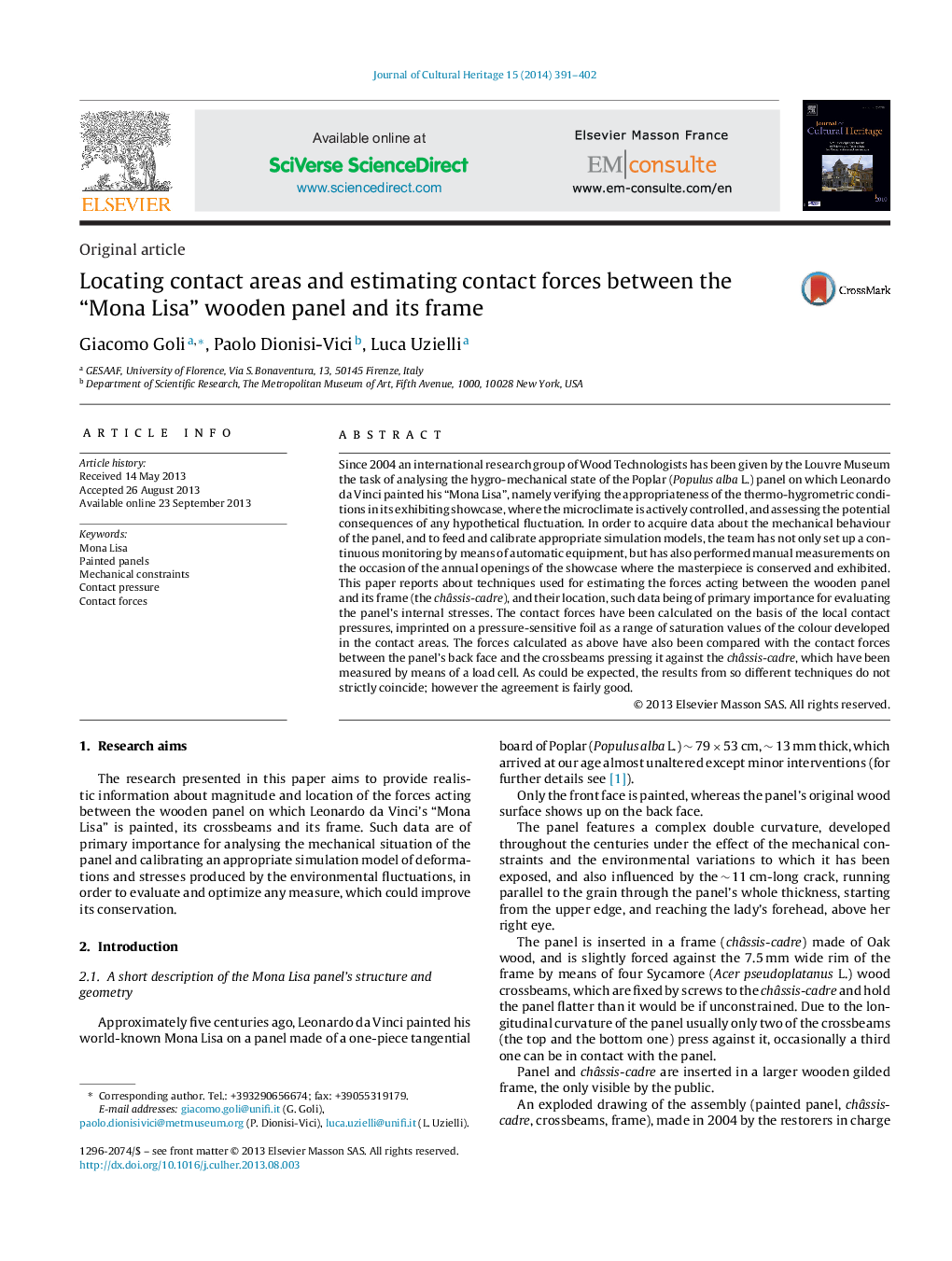| Article ID | Journal | Published Year | Pages | File Type |
|---|---|---|---|---|
| 1037996 | Journal of Cultural Heritage | 2014 | 12 Pages |
Since 2004 an international research group of Wood Technologists has been given by the Louvre Museum the task of analysing the hygro-mechanical state of the Poplar (Populus alba L.) panel on which Leonardo da Vinci painted his “Mona Lisa”, namely verifying the appropriateness of the thermo-hygrometric conditions in its exhibiting showcase, where the microclimate is actively controlled, and assessing the potential consequences of any hypothetical fluctuation. In order to acquire data about the mechanical behaviour of the panel, and to feed and calibrate appropriate simulation models, the team has not only set up a continuous monitoring by means of automatic equipment, but has also performed manual measurements on the occasion of the annual openings of the showcase where the masterpiece is conserved and exhibited. This paper reports about techniques used for estimating the forces acting between the wooden panel and its frame (the châssis-cadre), and their location, such data being of primary importance for evaluating the panel's internal stresses. The contact forces have been calculated on the basis of the local contact pressures, imprinted on a pressure-sensitive foil as a range of saturation values of the colour developed in the contact areas. The forces calculated as above have also been compared with the contact forces between the panel's back face and the crossbeams pressing it against the châssis-cadre, which have been measured by means of a load cell. As could be expected, the results from so different techniques do not strictly coincide; however the agreement is fairly good.
